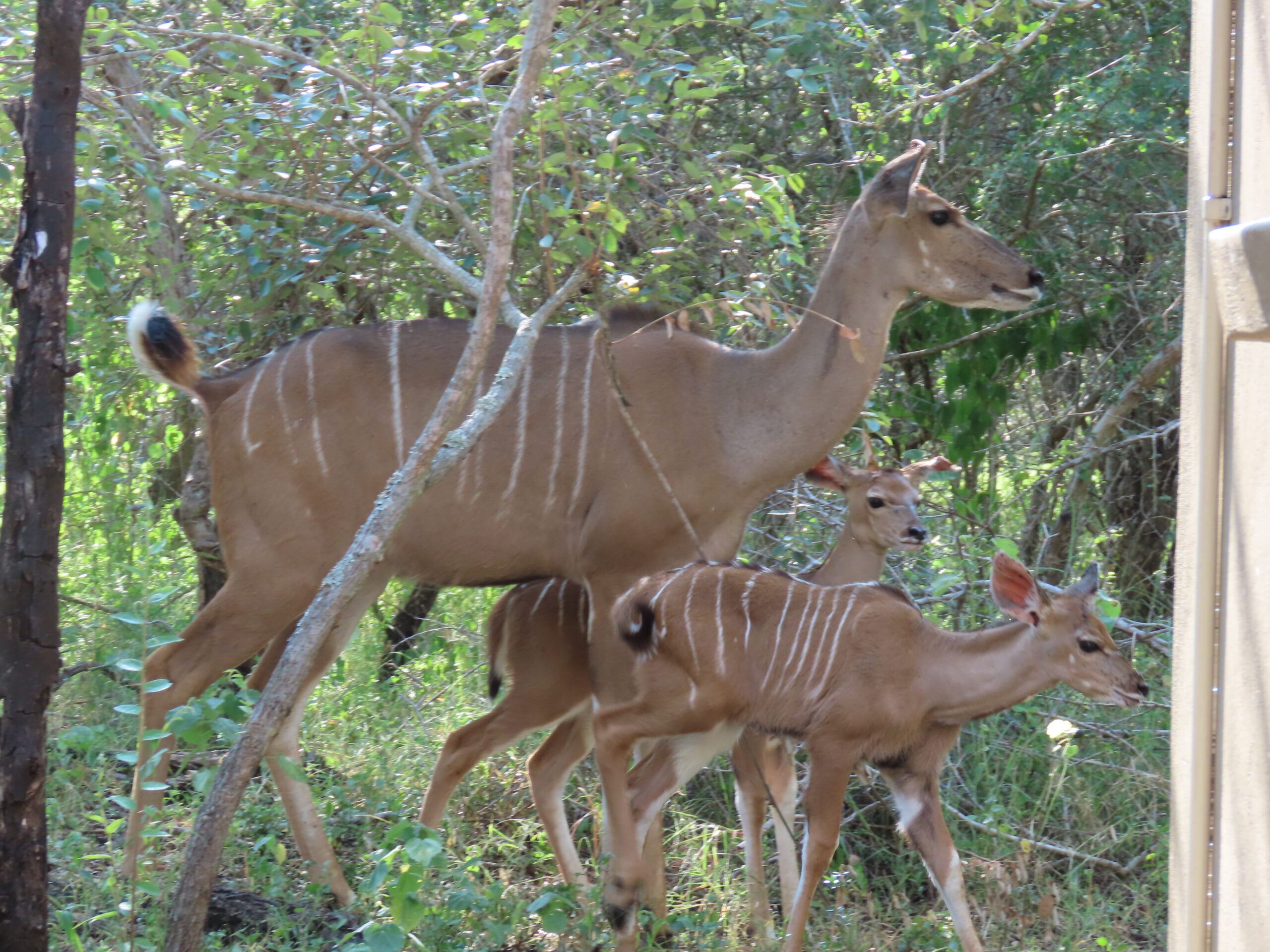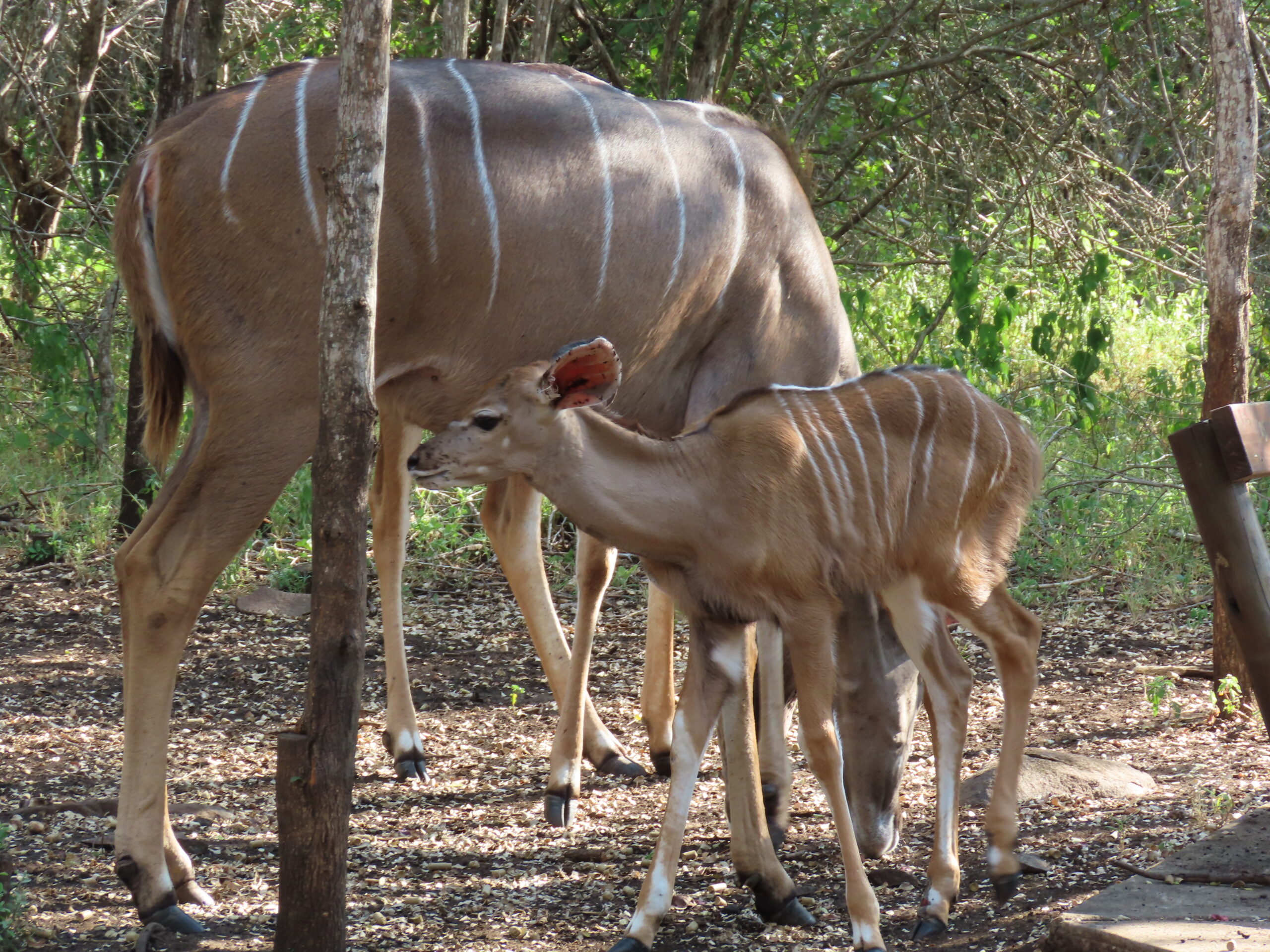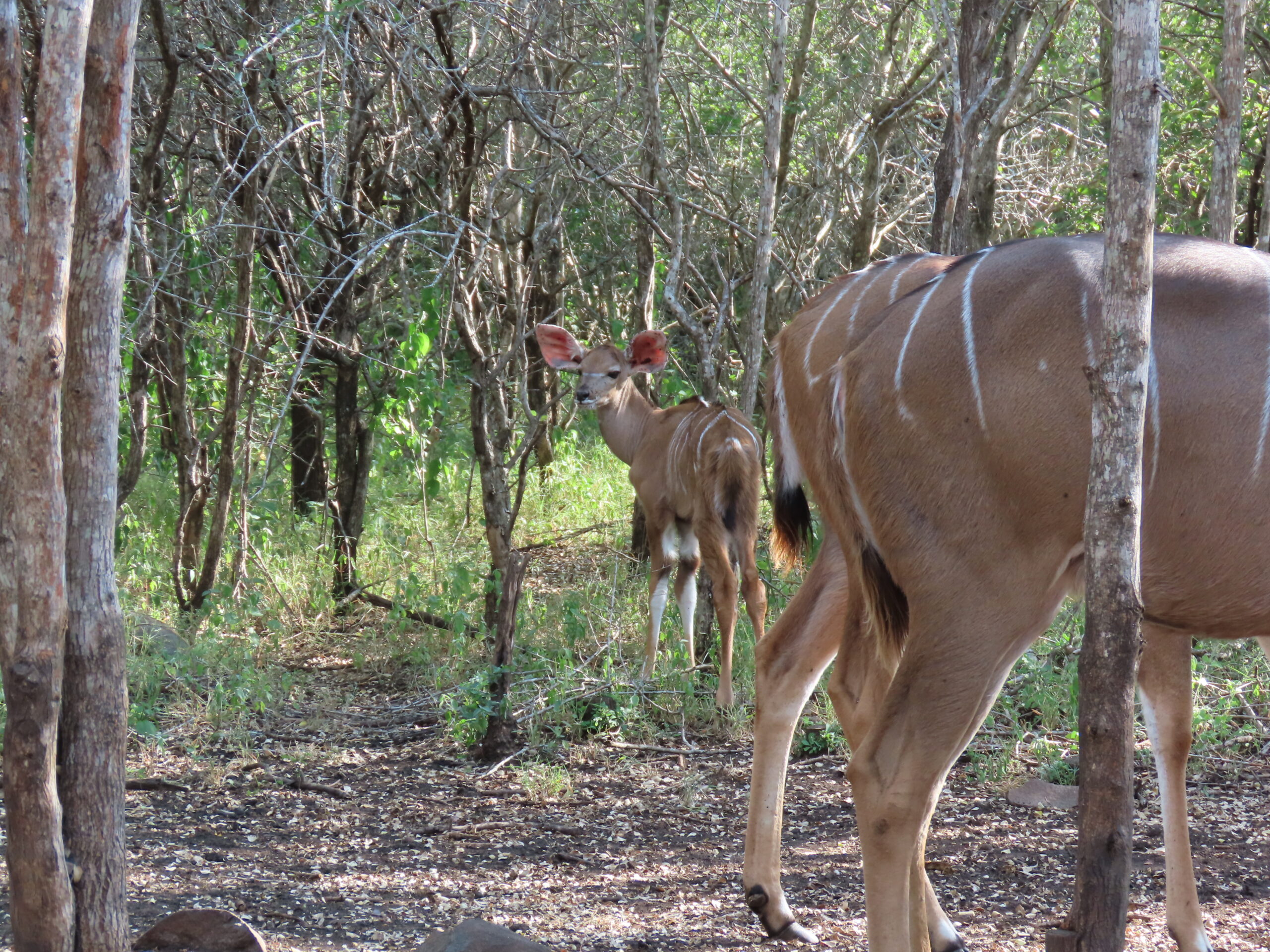
Last evening, when seated at the table on the veranda, as we chatted while listening to music using our excellent JBL Flip Essential speaker, suddenly we saw Bossy in the garden. I can tell it’s her due to many of her markings I’ve come to know, along with the ease with which she approaches the veranda.

Bossy has been visiting us since the first week we were back in Marloth Park in January 2021. Over the months, we noticed she was pregnant as her belly grew month after month. Most recently, we were amazed by how huge she’s become and how hungry she seems to be. The gestation period for kudus is 240 days, about eight months.
She appeared healthy and well-fed. Surely, we aren’t the only house she visits in the bush and is well fed from grazing and generous offerings of pellets and suitable vegetables. Most residents in Marloth Park that feed the animals offer considerably fewer pellets during the summer months, like now, when the bush is rife with natural food sources befitting their diet.

But, once we start feeding, it’s hard to stop due to their and our enjoyment in the animal’s frequent visit. Perhaps, it’s selfish of us to offer pellets when there’s plenty of vegetation available to them in the bush, which we’ll admit we are. But, we’ve cut down from going through three bags of pellets per week in the winter months when food is scarce when they nearly starve to less than one bag a week now.
Most likely, the majority of our pellets go to warthogs like Little and his friends and wildebeests Broken Horn and Hal, who all visit many times a day. Of course, a “pig is a pig,” and they, along with many of the larger mammals, consume volumes of food per day, far beyond what we’d imagine.

Undoubtedly, our frequent offerings of pellets impact the number of animals that visit us year-round. Certainly, this may have precipitated Bossy’s interest in returning several times a day, especially over the past few months when surely, she must have been ravenous so close to the birth of her young.
“Typically, kudus only give birth to one offspring, although there have been cases of twins as indicated here: Most commonly one calf is born though on rare occasions twins may be born. … Male calves remain with the mother in the maternal herd till they are 1½ years of age. Females will remain for longer than this. Sexual maturity is reached by the greater kudu at 1 to 3 years of age.”
When she arrived last evening, with her baby after we hadn’t seen her in a few days, we were shocked at first. Most kudus keep their young hidden in the bush for 4 to 5 weeks before bringing them out to graze. However, we believe that Bossy lives in our garden in the bush, hidden away in the dense vegetation, simply because we often see her.

It is entirely possible she brought the baby out from hiding to show it off. This morning, she arrived on her own, without the baby. Perhaps, she tucked away the little one, once again for protection. We wonder if the animals are aware of the nearby lions in Marloth Park. Most likely, they are and may have become extra cautious. These animals are more intelligent than we think.
In any case, we know it’s Bossy based on her distinct markings, the fact her huge belly is no more, and the addition of the precious little kudu following her around last evening, for a short period they were here. What a sight to behold!
It’s a quiet day at the house today, although we’ve had many visitors in the garden, including Gordy, Thick-Neck, Little, Hal, Frank, and the Misses, Duiker Couple, Chevy, and a sweet impala mom and baby whose photos we’ll share in tomorrow’s post.
Tonight, we’re off to Jabula for dinner with Rita and Gerhard, with the festivities for my birthday beginning on Sunday.
Happy day!
Photo from one year ago today, February 18, 2021:

